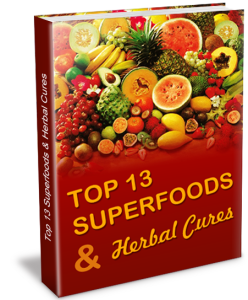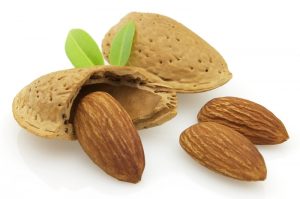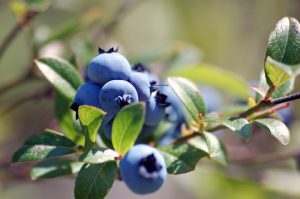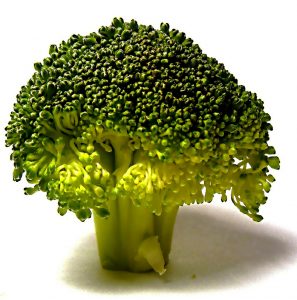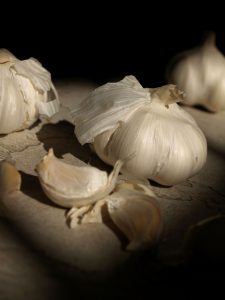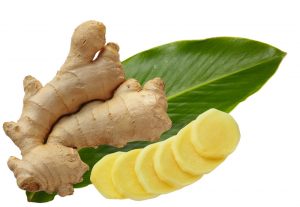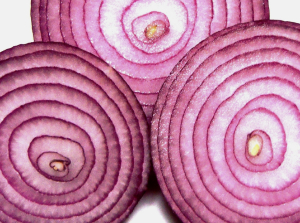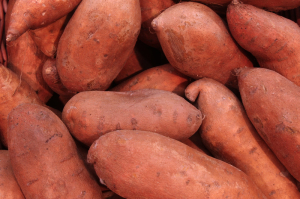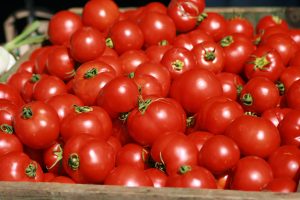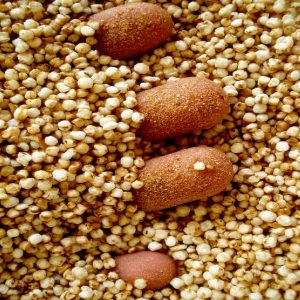Hello, and thank you for signing up for our free course of 22 emails packed full of information from Candida Remedies, Edible Weeds, Anti Cancer boosters, Thyroid Information and much much more…..
Be sure to check back with www.yourbodycanheal.com from time to time, as we are adding new information and ideas on a regular basis which you will find interesting and informative!
In the meantime, Don and I trust you enjoy reading this information packed eBook.
from our hearts to yours,
By Claire Rathausky
Table of Contents
Introduction ……………………………………………………………
Almonds .……………………………………………………………… 5
Apples ………………………………………………………………… 7
Blueberries ………………………………………………………. 9
Broccoli ………..………………………………………………… 10
Dark Chocolate …………………………………………………… 11
Garlic …………………..…………………………………………… 13
Ginger ……………………….………………………………………. 14
Onions ………………………….……………………………………. 15
Salmon ……………………….……………………………….… 16
Spinach ……………………….………………………………… 18
Sweet Potatoes .………………………………………………. 19
Tomatoes ……………………………..…………………………… 20
Quinoa ………………………………………..……………………… 21
Healing Foods and Herbs for Health Conditions ..………….… 22
ADD and ADHD …………..……………………………………….. 22
Anxiety and Depression …………………….……..………… 25
Candida ……………..………………..……………………………… 27
Graves’ Disease ………………………….……..…………….… 29
Halitosis …………………………………………………………… 31
Hypothyroidism and Hashimoto’s Disease ……..……………… 32
Lupus ………………………………………………………….. 33
Psoriasis …………………………………………………..… 34
Rheumatoid Arthritis ……………………………………….. 35
Urinary Tract Infections …………………….……………… 37
Resources …………………………………………..….…………… 38
Disclaimer ………………………………………………………..…. 39
Introduction
Nature is abundant in healthy foods and natural substances that not only nourish the body but can also help us avoid diseases such as cancer, heart problems and diabetes. Hippocrates, the father of medicine, recognized the power of food and urged mankind to use food as a natural medicine for a reason.
Vibrant health starts with the food you eat; you can take all the best supplements in the world bu,t if those are not accompanied by a healthy diet you will not enjoy the health that you were meant to by design. How you look and feel is a direct reflection of what you eat so… be selective when choosing your food.
In this report you will find a list of Thirteen Super Foods that are loaded with nutrients that enhance the health of your organs and systems and protect your body from premature aging and disease.
And that’s not all. You will also find some tips and ideas on how you can enjoy these flavorful ingredients every day.
Finally, you will be presented with a list of healing foods and herbs that can assist your body in dealing with and recovering from certain health conditions.
Enjoy!
Claire
Almonds
Almonds can benefit the body in so many ways that it’s hard to believe such a small nut can pack this much punch. There are many different reasons why almonds are such a powerful food; probably the best way to explain this is by taking a look at all of the nutrients, healing properties, and of course, the best way to eat them.
The extensive nutrients contained in almonds include, among others, vitamin E, vitamin B2, protein, magnesium and potassium. Additionally, almonds are high in dietary fiber and monounsaturated fat, also known as the “good fat”, which is found in olive oil.
With respect to heart disease, the healing properties of almonds pack a one, two punch. For example, the monounsaturated fats, when ingested, help lower LDL cholesterol, which is a major risk factor for heart disease. Studies have proven that eating almonds over a period of only two weeks can have a positive impact on LDL levels. Vitamin E, an antioxidant, helps lower cholesterol and magnesium reduces stress on veins and arteries by increasing blood flow and oxygen to the brain and throughout the body.
For optimal cellular health vitamin B2 is essential. Your body has a high amount of oxygen-containing molecules that are used to produce energy. Sometimes, these molecules can be reactive and cause damage to the mitochondria; however, this can be prevented with a protein molecule called glutathione, which vitamin B2 allows being recycled within the body. Essentially, without vitamin B2 the glutathione would not be able to recycle itself and defend your mitochondria against danger.
Beyond heart and cellular health almonds possess an array of healing properties that help promote weight loss and colon health as well as protecting you from anemia. Did you know that a quarter of a cup of almonds contains over 4 g of fiber – a whopping 16% of the daily requirement? Or, that eating almonds are a great alternative to red meat for getting your daily dose of protein?
Healthy cooking ideas for almonds are far from traditional. You can of course eat them as is, in fact, many health experts recommend eating the skin of an almond to get the maximum benefit. However, there are more creative ways to get your daily almond fix – for example:
• Add fresh almonds to a salmon salad in addition to lemon juice and capers
• If you don’t eat fish, try almonds with some yogurt for a tasty treat
• For a twist on a holiday favorite try adding almonds to cranberry sauce for a wonderful taste
• Almond shavings can also be added to a variety of main dishes including roasted chicken with mango for an island flavor.
Can you think of a better tasting way to stay healthy? Make almonds part of your daily life and your body will reap the rewards!
Apples
The health benefits of apples go way beyond what most of us are aware of. Often people will pick apples for fun, have a slice of apple pie with some ice cream or make some apple cider in the fall. But apples have much more to offer than just being comfort food or a nice gesture for the teacher. They contain many natural ingredients that can help the body protect itself from heart attacks and promote a longer life.
Apples offer a multitude of benefits and healing properties, and the best part is that all you have to do is pick one up and eat it – it’s that easy! Nutrients in apples are abundant…
• one apple contains over 3 grams of fiber, including the peel
• one apple contains 8% of your daily value of vitamin C
• apples are high in potassium content
• apples are the single most potent source of phenols in the world
Healing properties of apples are plentiful because of all the disease fighting ingredients they are loaded with.
The high content of phytochemicals in the skin can help lower your risk of colon cancer. The soluble fiber source, known as pectin, goes into your digestive tract and liver latching onto bad LDL cholesterols, thus lowering your LDL cholesterol by up to 16%. The fiber content found in apples can help control Type II diabetes as well. The high levels of fiber stabilize the absorption of glucose derived from food helping blood sugar levels stay low.
So you see, there is no better way to promote good health than eating two pieces of this powerful fruit at least twice a day.
When selecting apples at the grocery store look for ones that are small, ripe and firm and are free of defects, brown spots or bruises. The apple that contains the most nutrients is the Red Delicious.
The many ways in which apples can be eaten are numerous. While some prefer them right off the tree, others prefer them in desserts such as apple pie or apple cobbler. A healthy dessert option is diced cinnamon apple. Simply cut up a few apples and toss a pinch of cinnamon over them and you’ve got yourself a tasty treat. If you like to mix things up a bit apples make a great addition to any fruit salad. Also they mix well with wild rice, sesame seeds, chopped fresh tomatoes, fresh chopped parsley, salt and a few drops of lemon.
And don’t forget the main course … apples can also be used in a variety of dishes. Like chicken stir-fry for instance – just toss some diced apple onto the finished product to add a nice sweet flavour.
If the old saying “an apple a day keeps the doctor away” didn’t make sense before, it sure does now. We guess that’s why the saying has endured for so many years.
Blueberries
Blueberries are one of the best fruits you can eat. In fact, wild blueberries have more good nutrients in them than almost any other fruit in the world. And if that’s not bold enough we would venture to say that blueberries can literally save your life with their abundant nutrients and vast healing powers that can affect your physical and mental health.
Blueberries are rich in antioxidants and contain pterostilbene, a powerful antioxidant compound. In lab studies pterostilbene has been linked to lowering cholesterol levels as well as demonstrating the remarkable ability to slowing down the aging process.
A connection has also been established between blueberries and better vision. More specifically, blueberries have been shown to have a positive effect on night-vision acuity and doctors often recommend eating blueberries instead of carrots to avoid age-related vision deterioration.
It’s also been proven that blueberries carry an antioxidant compound called resveratrol, a potent anti-cancer agent.
Recently, blueberries were ranked the number 1 smart food by educational researchers for their long lasting effects on the brain. The antioxidants in blueberries contribute to creating less stress to the brain thus helping with the prevention of age-related problems such as dementia and improving short-term memory.
Blueberries possess an amazing array of health benefits and, the best part is, they taste great too! While you have probably eaten blueberries in your muffins or cereal, there is much more you can do with them. Think about adding fresh blueberries to oatmeal, plain yogurt, fruit salad or cottage cheese … they’re even great all on their own. Whatever you do, just remember to eat blueberries as often as you can to stay healthy.
Broccoli
Broccoli is the ultimate low-calorie high-nutrient food. Known for its super healthy nutrients and healing powers, broccoli is one of the best foods for your body. It’s also a versatile veggie that can be added to everything from soups and salads to pitas.
Did you know that …
Broccoli has more vitamin C than orange juice! In fact, when compared to broccoli, orange juice may as well be a glass of orange water. One cup of broccoli contains over 200% of your daily value of vitamin C. It also contains large amounts of vitamin A, potassium, iron, magnesium, fiber, and much more.
Broccoli is a rich source of indole-3-carbinol a substance that is converted by stomach acid to diindolylmethane (DIM), which is used to treat cancer. This vegetable is so powerful that it can help prevent and treat many diseases, including cancer.
Broccoli has been said to reduce heart disease, or cardio risk up to 20%.
It can also help to prevent cataracts, it builds stronger bones, boosts your immune system, and even helps reduce the risk of arthritis. The sulforaphane in broccoli has been proven to help sun damaged skin.
With an abundance of healing qualities and nutrients, it is amazing how versatile broccoli can be as a dish. It can be used in everything from a simple vegetable medley to a complex pasta dish and is commonly used in Asian cuisine in stir-fries. Another way to enjoy broccoli is to chill it and serve with a homemade light ranch dip or hummus.
Doctors also recommend that one should eat Broccolini or baby broccoli for maximum nutrition. Another great broccoli dish is mixing chicken, broccoli and rice in a stir-fry wok. Finally you can steam broccoli briefly and match it up with a chicken or fish filet for a healthy dinner.
Broccoli is a power food that is nearly un-matched. With its availability and versatility in dishes there is no reason that it cannot be eaten often.
Bonus Tip: When buying broccoli choose the heads with a bluish/purple hue, which is an indication of freshness.
Dark Chocolate
Wait! Do not reach for milk chocolate. Raw organic cacao is the real antioxidant powerhouse; it has more than blueberries. To get that you need to buy at least 70% organic chocolate, chew on raw organic cacao beans (the later being hard to find and real bitter), use cacao butter, cacao paste or powder, or cacao nibs. Make raw organic deserts and get the maximum benefit.
The ultimate dessert ingredient:
Dark chocolate has lots of minerals, vitamins, and beta-carotene. For example, it has epicatechin and resveratrol – powerful antioxidants, and it is loaded with zinc, chromium, and magnesium. Chocolate benefits the heart and blood vessels; it is said to be an anti-aging food.
In the same way that coffee give you a morning “kick” cocoa will help make you bright-eyed but will be far more steady.
Epicatechin has been found to prevent your nerve cells from damage. Resveratrol is the potent antioxidant that is located in red wine and now available as a powerful supplement that can cross the blood-brain to protect your nervous system from damage.
The right chocolate will reduce cardiovascular disease by 37 percent, stroke by 29 percent, lower insulin resistance, reduce blood pressure, make blood vessels more elastic, and even drive down LDL. However, too much causes more problems than it solves. Plan to eat 3.5 to 7 ounces a day for the best outcome.
According to Dr. Mercola, raw cocoa or 70% organic is
• Anti-inflammatory
• Anti-diabetic and anti-obesity
• Neuroprotective
• Slows progression of periodontitis
• Anti-carcinogenic
• Improves gastrointestinal flora
• Improves exercise endurance
• Anti-thrombotic
• Cardio protective
• Reduces stress hormones
• May help extend lifespan
• Lowers Alzheimer’s risk
• Improved liver function
• Reduces symptoms of glaucoma and cataracts
• Protects against pre eclampsia in pregnant women
Garlic
Hold your nose because we’ve got some garlic on the way. This potent vegetable really packs a flavourful punch and is powerfully healthy for you too.
Garlic has over 100 sulphur compounds, most notably allicin, the potent compound that gives garlic its unforgettable smell. Allicin is only formed when garlic cloves are chopped, cut, or chewed. Garlic is unique in that its allicin levels are very low if it is static; only when garlic is “damaged” or cut, chopped and chewed does it become the lifesaver we know it to be.
Why eat garlic?
• it helps maintain healthy blood pressure by lowering the LDL cholesterol in ones body.
• it helps to reduce the build up of plaque in the artery system (this effect is greater in women than men.)
• it can help prevent diabetes by lowering blood sugar.
• it helps prevent blood clots thus lowering the possibility of stroke.
• it can prevent stomach cancer and reduce the chance of tumor growth.
• it is known as a potent antibiotic that can kill some small strains of bacteria.
• it is known to reduce yeast infections because it contains Candida species.
And the good news is that garlic is great to eat in so many ways. Ever think of adding it to pizza or a dish of pasta? It also tastes great on a Portobello mushroom sandwich and is spectacular on a chicken sandwich. Not in the mood for a sandwich? No problem, try garlic in French onion soup or a tossed salad.
Raw garlic packs the best nutritional punch, however, if you’re cooking with it add it at the very last minute to avoid destroying the properties of allicin.
Studies show that a daily dose of garlic (e.g. one raw clove) will help you maintain vibrant health. So next time you’re at the store pickup a few cloves of garlic and some breathe mints for later.
Ginger
East Indians and modern alternative healers consider ginger to be a natural healer for a wide variety of ills and a strong preventative of any disease. Indians drink ginger infused chai daily, others make a tea of it all winter to avoid colds and flu, and finally it can be added to sauces and salad dressings for a nice health “punch.”
Were you aware that….
Ginger is great for digestion. If you have a stomach ache or lower GI tract cramps, just munch on a little piece of ginger. Also, Ginger is capable of reducing embarrassing flatulence (intestinal gas). As a means of aiding digestive juices to flow, ginger also calms the excess gas in the digestive tract. Other digestive assistance includes awakening a sluggish appetite or helping to overcome nausea (like after surgery, when carsick or airsick, or due to a prolonged stomach irritation).
Ginger is a great option when joint aches are a problem. Ginger is an anti-inflammatory agent; it can bring relief from swollen joints. Buying ginger oil for bathwater can also be an aid to swollen joints. Why not drink a cup of ginger tea while soaking?
Have you every heard of problems with the body related to the assimilation and absorption of essential nutrients? Well, ginger helps with that issue by making essential nutrients available for use by the body.
Many people are plagued with sinus problems and other areas that need to function in a healthy manner. Sinuses are one of the “microcirculatory channels” of the body. Ginger will aid in keeping those areas functioning normally.
Ginger tea will also help with a nose or throat infection. In the winter, when you feel “bone cold,” inhale the hot ginger tea to feel overall healing and relaxation.
Oddly enough, you might find that a blue diamond shaped pill is not the best answer to wedding bliss. Ginger has long been said to have aphrodisiac qualities.
Onions
Tell me you’re crying because of the onions, not because you’re sad. After you discover the health benefits of onions you can turn those tears into tears of joy.
Onions contain many nutrients like vitamin C, vitamin B6, dietary fiber, folate, potassium, copper, manganese, molybdenum, phosphors and tryophan. Onions are potent in sulphur compounds such as allyl propyl disulphide, which can help bring high blood pressure down and deter tumor growth. Onions also contain the flavonoid Quercitin that has a high antioxidant activity.
Onions have many healing benefits. Among the best is their ability to lower blood sugar levels. This is a great benefit to people with diabetes because it can help regulate blood sugar more efficiently.
They also lower the risk of heart attacks by lowering homocysteine levels and may protect against colon cancer. These pungent veggies are also known to promote bone health and act as a natural antibiotic keeping infections and viruses away.
Onions come in a variety of shapes and colors and can be labeled as Spanish, yellow, white and red. There are not any nutritional differences among these types.
Onions can be tasty in so many ways! Try French onion soup, sautéed as a topping on a lean steak, chopped in a tossed salad or sprinkled into a chicken fajita. They’re also good to eat on almost any sandwich. While onions may cause you to tear up at first sight, they are certainly a power food loaded with many great nutrients you don’t want to miss.
Salmon
Wild salmon is a favorite amongst bears in Alaska, and those bears are turning out to be some healthy beasts! Wild salmon is a fish loaded with nutrients that help keep the body healthy. And, it should be noted, that Salmon is the only fish on our 12 super food list.
Salmon is loaded with vitamin B6, vitamin B3, vitamin B12, vitamin D, phosphorus, magnesium and omega-3 fatty acids. It also contains a good amount of selenium, tryptophan and is high in protein.
Fatty acids are good for the body. That’s right … not often do you see fatty and good in the same sentence. Fatty acids, specifically the omega-3 fatty acids in salmon, are very beneficial to the body. Wild caught fish, like salmon, are known to have high levels of omega-3s.
These fatty acids help prevent heart attacks, lower blood pressure and cholesterol levels and increase blood flow. Possibly the most beneficial aspect of eating foods with omega-3s is the reduction in the risk of stroke. Studies have shown that people who regularly eat salmon or other foods with large amounts of omega-3s have a 27% less chance of having a stroke.
Other benefits of omega-3 include:
• improvement in insulin sensitivity in people with Type 2 diabetes
• effective in combating dry eye disease
• helps protect the body against cancer
• has been linked to lowering the chances of contracting Alzheimer’s or dementia from aging
• known to aid in the prevention of sun damage to the skin
• ease menstrual pain and discomfort
As with any food you should try to get your salmon as fresh as possible. Also, you should look for wild salmon instead of the farmed variety, which contains antibiotics and artificial additives, which gives it its pink color.
Even though salmon is quite popular due to its health benefits wild salmon, can be difficult to get during certain times of the year. Fortunately, we’re happy to say, we’ve found a solution to this problem with a great supplier that offers premium natural salmon from the remote and pristine waters of Alaska. This salmon has been tested and found free of harmful contaminants like PCB’s. This is our choice of salmon and if you would like to reap its benefits for yourself check it out.
Salmon has a wonderful taste and can be enjoyed many different ways.
Here are some of our favourites:
• naturally smoked salmon tastes great with capers, onion rings, lemon and crackers
• try it with low-fat cream cheese and a whole wheat bagel
• add some grilled filets to the top of a tossed salad
• brush with a mix of soy sauce, ginger, garlic and dill and bake in the oven for a few minutes
• try a Napolitana sauce made with canned wild salmon and enjoy it with your favorite whole-wheat pasta.
• if you like avocados try this: mash some avocado with a spoon and mix with onion; put it on slices of naturally smoked salmon and make a roll. Cut it and enjoy as healthy finger food.
Our only fish on the super food list provides an endless amount of nutrition. Be sure to get your fresh salmon before the bears catch them all and eat them up!
Spinach
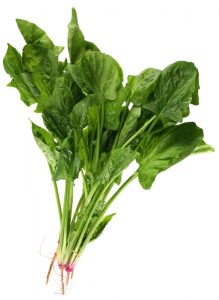
What makes spinach so special is the number of amazing nutrients that it packs into its small leafy frame. Spinach is rich in vitamin K, vitamin B6, vitamin E, vitamin B2, vitamin C, vitamin A, and vitamin B. It also has an abundance of folate, iron, calcium, zinc, protein, copper, magnesium, selenium and fiber.
Spinach is similar to salmon in that it contains the amazing omega-3 fatty acids. Additionally, it has lutein and many flavonoid compounds. With so many nutrients Popeye is starting to look like a smart guy!
The healing properties of spinach are practically endless. Here are a few:
• flavonoid compounds make it effective in cancer prevention
• carotenoid compounds help maintain good prostate health
• vitamin K helps keep bones healthy and strong
• vitamins C and A help prevent heart attacks by cleaning up the free radicals in your blood stream
• promotes colon health
• protects against dangerous diseases like dementia
• helps brain function after a stroke
With so many healing attributes it’s no surprise that spinach has become a popular item at the dinner table. Baby spinach salads are the fad right now but there are many other ways to eat spinach. If you’re in a southern cooking mood you can try cooking creamed spinach or wet spinach, which is, similar to collard greens. If you want more of a lunchtime favorite try spinach on top of a chicken breast in a pita or use it to complement a fresh mozzarella and tomato salad.
Bonus Tip: spinach is best eaten raw for the maximum nutrient punch. If you cook it avoid doing so for too long as it can lose up to 50% of its mineral content.
Sweet Potatoes
If you haven’t had a sweet potato before you don’t know what you’re missing! They have a wonderful flavour and are good for you too.
Sweet potatoes, also known as yams, are one of the world’s favorite sweet treats. Sweet potatoes are most often associated with the holidays, especially Thanksgiving and Christmas, but have become a staple at many dinner tables. Most recently steak house chains like Outback and Long Horn have started offering sweet potatoes with their steaks as side dishes. If the big box restaurants have caught on then you know there is a story to tell.
The sweet potato has a high concentration of vitamin A, vitamin C and vitamin B6 and contains copper, fiber, iron, potassium and manganese. They’re also high in antioxidant content.
The healing properties of the sweet potato are numerous. It is loaded with powerful antioxidants that can help the body in numerous ways, including:
• beneficial to diabetic’s because they have been proven to stabilize the blood sugar levels of individuals after eating them.
• vitamin A helps battle diseases such as emphysema, strengthens the immune system, reduces oxidation of LDL cholesterol and helps reduce arterial cholesterol build-up and helps prevent cataracts.
• antioxidants help reduce the risk for heat attack by increasing blood flow.
Eating sweet potatoes is not much of a chore since they taste so sweet and cook very quickly. They are great baked in the oven, sprinkled with a little cinnamon or eaten boiled and mashed – add a teaspoon of butter and dill and a pinch of salt if necessary.
Tomatoes
Tomatoes are truly one of the best vegetables you can eat. This vegetable is packed with so many nutrients that it’s worth eating whenever you have a chance.
Tomatoes are loaded with nutrients including niacin, vitamin B1, vitamin B6, vitamin E, vitamin C, vitamin A, vitamin K and vitamin B5 and contain large amounts of iron, potassium, folate, copper, protein and tryptophan. Lycopene is a carotenoid found in the tomato and also packs a mighty punch against disease.
Healing properties for the tomato are abundant and include the following:
• the antioxidant lycopene helps protect the body against prostate, colorectal and pancreatic cancer.
• niacin has been proven to lower cholesterol and protect against heart attack.
• vitamin K helps maintain healthy bones.
• high riboflavin content is effective in combating migraine headaches.
• tomato juice, it is known to thin out your blood for better circulation.
Tomatoes, when heated or cooked, can lose 10% of the vitamin C content, however, on the positive side they release up to 8 times as much lycopene. Increasing your lycopene intake can benefit your body greatly. If you’re undecided eat them both ways for a one-two punch.
Tomatoes are universally appealing and are great as a condiment or a base for sauces. Try adding to soups and salads or simply slice them up and serve with a pinch of salt, your favorite herbs and a drizzle of olive oil.
Bonus Tip: fat from the oil will help your body absorb more lycopene.
Quinoa
One of the super foods all people require to replace, repair, grow, or maintain the human body is protein. However, in general people are eating far too much of it in the form of fat-laden animal flesh or by-products. This has contributed to obesity in humans and disastrous ecological issues from the excess methane gasses from animal waste.
It is reported that woman need about 46 grams or protein a day and men 56. Several plant-based researchers suggest that a diet that is 3% protein is plenty, but 10% is typically recommended. Quinoa (keen-wah) is reported to be a complete protein as it has all 9 of the essential amino acids. It also contains about twice as much fiber as other whole grains.
Quinoa is gluten-free. As more evidence has surfaced that our diets are wheat-rich to the point of developing wheat sensitivities (intolerance and inflammation), and several heritages are more susceptible to celiac disease, there is a trend to reduce wheat consumption. Quinoa is an outstanding substitute for brown rice.
Quinoa contains many benefits for our bodies. Quinoa has iron to benefit our blood, regulate our body temperature, give us energy, and enhance enzyme activity. Quinoa is rich in magnesium to improve elasticity in blood vessels, reduce the risk for type 2 diabetes, and a multitude of other benefits. Quinoa has lysine to help tissue growth and repair, lots of manganese – an antioxidant. Two other antioxidants are quercetin and kaempferol – even more than in cranberries.
The Food and Agricultural Organization of the United National (FOA) has declared 2013 “The International Year of the Quinoa.” This is due to “high nutritive value.” Other lesser known foods, like chia seeds and the moringa tree offer a nutritional power jolt that might one day join quinoa to overcome malnutrition.
High quality fats are present in quinoa. These supply vitamin E in the form of alpha-, beta-, gamma- and delta-tocopherol.
Healing Foods & Herbs For Health Conditions
ADD and ADHD
Cure ADHD
Yes. You can cure ADHD by taking two easy steps that do NOT have negative side effects:
• Take your child outdoors in a natural setting.
• Feed him or her organic fruits and vegetables (not GMO).
I know this is true because I have years of experience as a special education teacher, and I was awarded a PhD in special education. I have had enormous success with this easy solution.
Do not medicate!
Do not feed your child processed foods (unnatural sugar, salt, fat, and chemicals like caffeine), drinks (unnatural sugar, salt, fat or chemicals), or fast food (unnatural and excessive sugar, salt, fat and chemicals), Limit your child’s access to a TV or a computer.
It really is that simple. Take the chemicals out. You will have a normal, calm, focused child with the correct amount of energetic expressions.
Key Foods
Sixty percent of the brain is made up of fats. To function properly, the brain needs two essential fatty acids – alpha linolenic acid (Omega-3) and linoleic acid (Omega-6). These fats can influence brain development and performance.
- Fatty fish from cold water, like wild salmon and mackerel, have high concentrations of Omega-3, especially DHA, the most important of the Omega-3’s. This is the reason why children and adults with ADD/ADHD can greatly benefit from eating such foods.
- Docosahexaenoic acid (DHA) is a fatty acid that plays a vital role in the proper development of the nervous system and the good functioning of the brain in adulthood. Studies suggest that a lack of sufficient DHA could be associated with the incidence of ADHD and learning disorders in children
- Other foods that have Omega-3 fatty acid that are thought to improve learning and behaviour are: flax seeds or flax oil, vegetables, and whole grains.
- Omega-6 fatty acids, in particular dihomo-gamma linolenic acid (DGLA) and its precursor, gamma linolenic acid (GLA), play a crucial role in brain function. It’s been found that hyperactive children are deficient in DGLA. An excellent source of GLA is borage and evening primrose oil.
- Other food sources of Omega-6 fatty acids are leafy vegetables, nuts, seeds, grains and vegetable oils like corn, sesame and sunflower. Most diets provide sufficient amounts of Omega-6 but insufficient amounts of Omega-3.
- Vitamin E is another key nutrient to be considered. Fish oils tend to oxidize quite fast adding to the oxidant stress on the body. As a potent antioxidant, vitamin E protects all cells including neurons, from free radicals and, therefore, from oxidative damage. Vitamin E is an important addition to EFA oils as it helps avoid oxidation of the same.
Valuable Herbs
- Gingko biloba is a popular and powerful herb that has been shown in clinical studies to improve blood flow to the brain and enhance the functioning of the circulatory and nervous system.
- Gotu Kola or Centella Asiatica is known as ‘’food for the brain” and is used to revitalize the nerve and brain cells. It helps increase concentration and attention span and has a general calming effect. These properties make it beneficial to people suffering with ADD and ADHD; it stimulates the brain enhancing the ability to stay focused while soothing the nervous system at the same time.
- Skullcap is a powerful medicinal herb native to North America that has been used for more than two hundred years for its relaxing and sedative properties. It contains many flavonoids, which help to calm the nervous system and reduce excitability. A wide range of nervous conditions can be treated with Skullcap including insomnia, anxiety, delirium tremens, epilepsy and ADHD.
- German Chamomile is originally from Europe and is an edible and medicinal herb that has been widely used for centuries to promote calm and relaxation. Active ingredients of German Chamomile include flavonoids, volatile oil, tannins, coumarins and polysaccharides.
- Rooibos, native to South Africa, is an herb with multiple health-promoting properties. It has antioxidant and anti-allergic effects and contains important nutrients that play a key role in the healthy functioning of the nervous system and the brain including magnesium, zinc and iron. Rooibos contains a natural relaxing sedative, which is used to soothe nervous tension.
Anxiety and Depression
Key Foods
Foods that help reduce the symptoms of blue moods, irritability, brain fog and restlessness include: cauliflower, avocados, mushrooms, asparagus, peanuts, sunflower seeds, yogurt, cheese barley, oats, salmon, turkey, beef, tuna, crab, bananas, mangoes, chickpeas and sweet potatoes. Why? Because these foods are rich in B vitamins.
B complex vitamins work with enzymes to transform food into energy. They are necessary for the proper functioning of the nervous system and help increase energy or bring relaxation to people dealing with fatigue or stress.
When there is a deficiency in certain B vitamins symptoms such as fatigue irritability, depression, nervousness, heart palpitations, restlessness, indigestion, loss of appetite and insomnia may appear.
Magnesium rich foods also can be helpful in cases of anxiety. Symptoms of magnesium deficiency include nausea, vomiting, fatigue, abnormal heart rhythms, anxiety, agitation, behavioural instability, restlessness, depression and insomnia.
Beans, lentils, almonds, cashews, Brazil nuts, leafy green vegetables and legumes are excellent sources of magnesium. Magnesium helps with muscle relaxation, neuromuscular transmission and maintenance of the heart and kidney health.
Foods containing the amino acid tryptophan cut the levels of cortisol up to fourteen percent and increase the brain’s production of serotonin, the “feel good” hormone. Foods that have this amino acid are dairy products, meats, poultry, seafood, eggs, beans, whole grains, rice, hazelnuts and sesame seeds.
Lastly, foods containing calcium may help as well as calcium is a natural tranquilizer. This mineral aids in the transmission of nerve impulses and the regulation of the heart’s rhythm. Dairy products are the best sources of calcium. You can choose from plain yogurt, 2%, non-fat milk, partly-skimmed mozzarella, 2% cottage cheese and partly-skimmed ricotta cheese. Tofu, soybeans and brown rice are also acceptable sources of calcium.
Valuable Herbs
- Lavender is a popular herb used in natural medicine and aromatherapy to induce relaxation and help alleviate anxiety, insomnia, restlessness and loss of appetite. This herb, that is indigenous to the mountainous zones of the Mediterranean, has grown in popularity due to recent studies that demonstrate its effectiveness in producing soothing and calming effects.
- Melissa or Lemon Balm has different therapeutic properties and helps soothe tension and calm the nervous system. It induces peaceful sleep and helps reduce blood pressure. Lemon balm can be taken as a tea by simply mixing two teaspoons of the herb in a cup of hot water and letting it steep for about fifteen minutes.
- Passionflower is one of the most recognized natural tranquilizers, which has been used as a folk remedy to treat anxiety. It contains three different sedating compounds – maltol, ethyl-maltol and flavonoids. Passionflower or Passiflora Incarnata has powerful calming properties and also promotes sleep and soothes emotional turmoil.
- Valerian. Herbalists around the world have used valerian for centuries to treat anxiety and insomnia. This herb soothes stress and promotes restful sleep by calming the mind and body. It’s non addictive and can be made into tea.
- Chamomile has a long history as a valuable herb that soothes frayed nerves by slowing down the central nervous system. Recent studies have shown that chamomile may be helpful in relieving menstrual cramps and fighting infections associated with colds.
- St. John’s Wort is an herb native to Europe and, according to German researchers, is very effective in the treatment of anxiety and depression. It has tranquilizing and muscle relaxing effects and taking it helps to reduce sadness, exhaustion and poor sleep.
Candida
Key Foods
If you’re struggling with Candida you will need to reduce your intake of carbohydrates and increase your intake of lean protein (fish and chicken) and fiber. To ensure you get enough fiber mix one or two teaspoons of psyllium husks, flaxseeds or pectin in an 8 oz glass of water and drink it on an empty stomach twice a day. This promotes healthy daily movements, which in turn helps to eliminate the toxins and other substances that the Candida yeast produces.
- To strengthen your immune system and enhance digestion eat raw vegetables such as broccoli, kale, cabbage and onions. Chew them slowly and thoroughly.
- Antioxidants like vitamin C and selenium can help get rid of toxins from Candida. Get vitamin C from vegetables like broccoli, Brussels sprouts, cauliflower, cabbage, raw green peppers, and asparagus. Crimini mushrooms, seafood, eggs, chicken and turkey breast are very good sources of Selenium.
- Yogurt with acidophilus and garlic are also recommended. Garlic boosts the immune system, kills yeast and helps block the growth of Candida.
- Drink about 6-8 glasses a day of distilled or purified water to help flush out toxins.
Valuable Herbs
- Lemon grass, also known as cymbopogon citrates, is used to soothe stomach cramps, reduce fever and aid digestion. It has anti-bacterial and anti-fungal properties and the ability to help repair intestinal walls.
- Pau d’arco. Scientists from all over the world have documented the health benefits of Pau d’arco, particularly for yeast, fungal and bacterial infection. Pau d’arco is derived from the inner bark of the Tabebuia Impetiginosa tree grown in South America, which belongs to the Bignonia family. Pau d’arco has been recognized to have antioxidant, anti-cancer, analgesic, anti-parisiticidal, anti-inflammatory and decongestant effects.
- Calendula officinalis, also known as marigold, has anti-bacterial and anti-inflammatory properties. As an anti-fungal agent it is used to treat candidiasis. It has a high content of flavonoids and polysaccharides that help stimulate the immune system.
- Wild Mediterranean oregano is an excellent natural anti-fungal, anti-bacterial, antiparasitic and anti-biotic that is used to treat bacillus cereus, salmonella, toe nail fungus and Candida albicans. Wild oregano is also an antioxidant that boosts the immune system.

